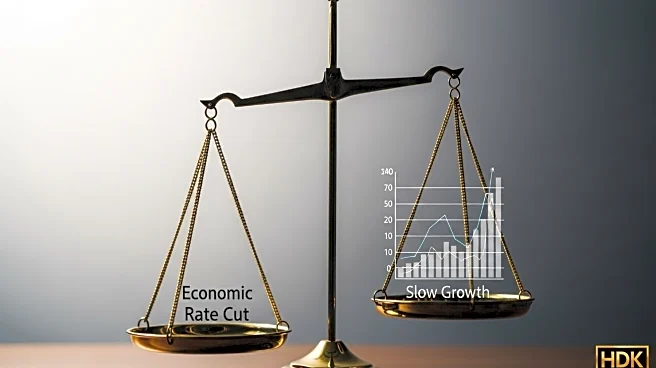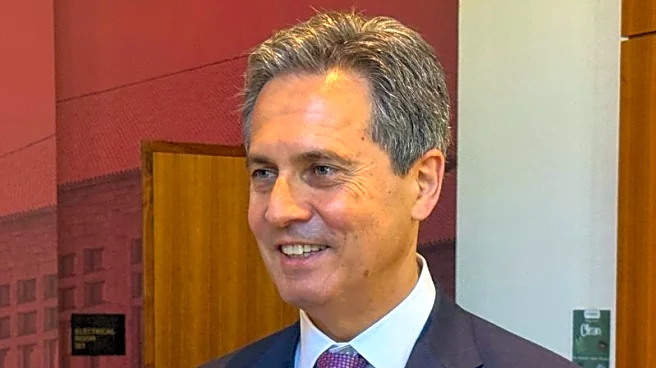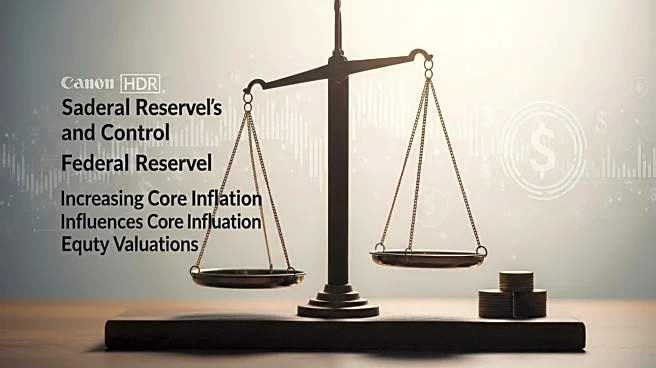What's Happening?
The Federal Reserve is contemplating a cut in the federal funds rate, currently ranging from 4.25% to 4.5%, due to concerns over slow job growth and the impact of tariffs on the U.S. economy. Economists predict that the upcoming jobs report from the Bureau of Labor Statistics will show a modest increase of 75,000 jobs in August, following a similarly low addition of 73,000 jobs in July. The unemployment rate is expected to rise slightly to 4.3%. This report is crucial as it may influence the Fed's decision at its next policy meeting in September. The July jobs report had already caused significant concern, showing a sharp slowdown in job growth and downward revisions for previous months. President Trump's tariffs are believed to be affecting hiring, and the Fed is considering lowering interest rates to mitigate potential unemployment increases.
Why It's Important?
The potential rate cut by the Federal Reserve is significant for several reasons. Lowering interest rates could reduce borrowing costs, potentially stimulating the job market and preventing a rise in unemployment. This decision comes at a time when the U.S. economy is experiencing slow job growth, partly attributed to President Trump's tariffs. The Fed's dual mandate to maintain low inflation and high employment is being tested, with the labor market becoming a growing concern. A rate cut could provide relief to businesses and consumers, but it also raises questions about the reliability of government data, especially after the controversial July jobs report. The outcome of the Fed's decision will have broad implications for economic stakeholders, including businesses, workers, and policymakers.
What's Next?
The Federal Reserve's decision on interest rates will depend heavily on the upcoming jobs report. If job growth remains sluggish, the likelihood of a rate cut increases. However, a significant rebound in job numbers could lead the Fed to maintain current rates. Additionally, private reports on the job market, such as those from ADP and Challenger, Gray & Christmas, may receive increased attention due to concerns about the reliability of government data. Revelio Labs is also launching its own measure of payroll growth, which could provide alternative insights into the U.S. workforce. The Fed's decision will be closely watched by economic stakeholders, and any changes in interest rates will have immediate effects on borrowing costs and economic activity.
Beyond the Headlines
The reliability of government data has come under scrutiny following the July jobs report, which led to President Trump firing the BLS director. This has raised concerns about the accuracy of future reports and the potential influence of political factors on economic data. The increased focus on private sector reports and new measures like Revelio Public Labor Statistics highlights the need for diverse sources of information to assess the U.S. workforce accurately. The Fed's decision-making process may also reflect broader economic challenges, including the impact of immigration policies on workforce growth and the balance between inflation and employment.












